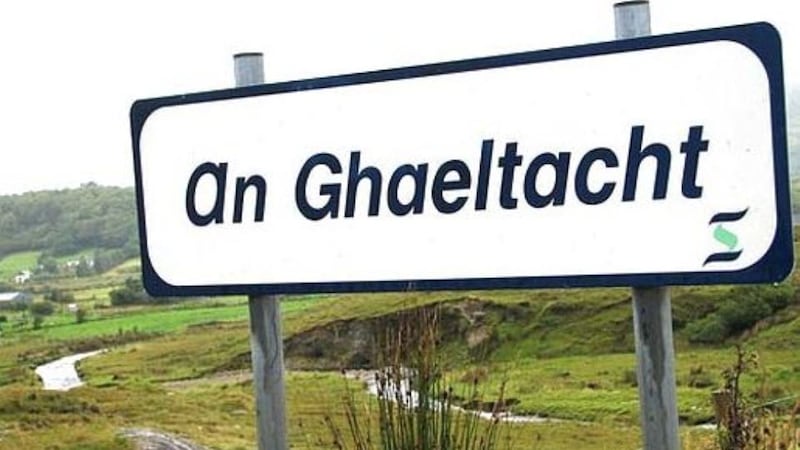They were a large group of newly arrived migrants, seeking a fresh start in a place far from home and speaking a different language from their host community, but even so, the reception they met was shocking. As local resentment festered that the newcomers were receiving favourable treatment, shots were fired at their homes while graffiti proclaiming “no more migrants wanted here” was daubed on their walls.
Faced with this catalogue of hate crimes, it's a wonder that any of the Galway Gaeilgeoirs who moved to Co Meath in the 1930s stayed there. Expecting a new life, they were instead welcomed with slogans such as "this land is not for Connemara people". This unusual strain of inter-county rivalry is only one of the surprising elements in the Documentary on Newstalk: The Making of a Gaeltacht (Saturday), producer Judy-Meg Ní Chinnéide's absorbing look at a singular social and cultural experiment from Éamon de Valera's Ireland.
As historical geographer Suzanne Pegley explains, there was a practical reason for the creation of a new Gaeltacht in Co Meath, as the Land Commission had been parcelling farms to inhabitants of chronically overcrowded west of Ireland for years. But in 1934 this process dovetailed with protests by the Connemara Gaeltacht community that it was being overlooked and the Fianna Fáil government's desire to promote the idea of an independent nation that was rural and Irish-speaking.

Among those who stayed, regional loyalties were a factor
The result was the villages of Ráth Cairn and Baile Ghibb, where Irish speakers from Kerry and Donegal as well as Connemara, were relocated to model farms, a far cry from the subsistence agriculture they had left. But as Ní Chinnéide discovers, the project soon ran into problems, the least of which was the hostility of (some) locals. A more serious source of attrition was homesickness. Moved to the far-off midlands at a time when it might have been half a world away, some natives of Dingle and Connemara so pined for the mountains and the sea that they returned home. A reading from a contemporary newspaper report attests the “mixed feelings of the new planters”.
Among those who stayed, regional loyalties were a factor. Uinsionn, a nonagenarian original settler from Kerry, remembers that neighbours from Mayo and Donegal would speak English rather than try to engage with his dialect. “They didn’t like my Irish,” he says wistfully. “We never gelled as a Gaeltacht.”
But if the Meath Gaeltacht didn’t kickstart the hoped-for revival of the Irish language, the area has survived: the documentary features interviews with descendants of the original “planters” still living there. All in all, it’s an intriguing story, nicely told by Ní Chinnéide. If there’s a complaint about the programme, it’s the timeslot. Anything airing at 7am on a Saturday morning is unlikely to top the ratings, even with a 10pm repeat that night. It can be heard online, but even in the podcast age, it would be nice if Newstalk gave its radio documentaries a shot at an audience.
It's a shame, because the station's factual strand has featured some offbeat delights of late. The previous documentary, Was Sherlock Holmes Irish?, is more an amiably entertaining ramble through Arthur Conan Doyle's life than a fiendishly complex mystery, but is no less diverting for that. As for the question of Holmes's nationality, producer Luke McManus concludes the fictional sleuth has enough Irish ancestry, courtesy of his creator, to qualify for the Republic's soccer team. The game is afoot, indeed.
Tiresome commute
These days, the journey from Connemara to Meath is less likely to be a once-in-a-lifetime exodus as a tiresome daily commute, if the stories heard by Marian Finucane (RTÉ Radio 1, Saturday and Sunday) are anything to go by. Finucane speaks to a trio of hardy souls who drive hundreds of kilometres each week to work. The item is ostensibly in response to a new report on how Dublin is encroaching on the rest of the country, though one of her guests actually travels to Galway.
Such quibbles aside, it’s a jolting discussion, all the more alarming because the contributors are happy with their situation. Solicitor Sinéad Fox, for instance, is on the road for three hours daily between Gorey and Dublin, but is adamant that “I wouldn’t live anywhere else”. Finucane is less sure. “But it’s a nightmare lifestyle,” she exclaims in horror.
Meanwhile, PR man Johnny Fallon says that travelling from Longford to the capital is a chore, he loves his "dream house" and his job – the 4½ hours travel each day is a price he's willing to pay, on top of tolls and fuel. The fact that they have to commute so far in order to work seems like another indictment of the haphazard and unfair caprices of contemporary Irish life, even if the item isn't explicitly painted in such terms.
Finucane has been riffing in this area quite a bit, albeit in her homely, “ah-sure-now” way. A recent piece on adults living with their parents toggles between a woman who bought a house with her parents and a tradesman back at home because he couldn’t secure a mortgage for him and his family. It’s as if the host can’t decide whether it’s heartwarming human interest fare or a grim dispatch from the housing crisis frontline.
But as for Finucane’s commuters, they’re unwavering in the conviction that the advantages of rural life, from cost of living to open spaces to local community, make any sacrifices worthwhile. “We may be unusual in that we don’t feel trapped,” Fox admits. Not all journeys turn out so well.
MOMENT OF THE WEEK: SAME SEX, MIXED MARRIAGE?
The History Show (RTÉ Radio 1, Sunday) marks Gay History Month with a gobsmacking trawl through the archives on how Irish television covered homosexuality in the 1970s. But the best line comes at the end, when presenter Myles Dungan recalls an anecdote about the Gate Theatre's founders, Micheál Mac Liammóir and Hilton Edwards, being accosted for holding hands. "Why don't you two get married?" asked the annoyed passerby. "We can't, dear boy," replied Mac Liammóir, "he's a Protestant." Marriage equality, how are you.










